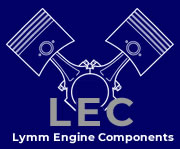Ford CVH Hydraulic Lifter Installation Guide
Hydraulic lifters are a critical component of the valve train in the Ford CVH engine. Proper installation is essential to ensure correct engine operation, reduce start-up noise, and extend component life. The following guide outlines the correct preparation and fitting procedure.
Pre-Installation Notice
Hydraulic lifters are supplied pre-soaked in oil to protect them during storage. This oil must be removed prior to installation. If not removed, it may cause the lifters to jack open or result in tapping/knocking noises during initial startup and early operation.
Step 1: Drain and Replace Engine Oil
Before fitting the new lifters, carry out the following:
Drain the old engine oil completely.
Replace the oil filter with a new one.
Refill the engine with high-quality engine oil suitable for the CVH engine, such as a 10W40 semi-synthetic or as specified by the manufacturer.
This ensures that any old contaminants are flushed from the system and that the lifters receive clean oil on startup.
Step 2: Remove Storage Oil from the Lifters
Each hydraulic lifter should be carefully bled to remove the protective oil:
Place a lifter in a soft-jaw or cloth-protected vice.
Gently compress the lifter body multiple times to expel the internal oil. Do not overtighten or damage the casing.
Repeat the process for all remaining lifters.
Confirm that the lifters are no longer firm and contain minimal oil—they should feel spongy.
Removing the oil ensures the lifters are not hydraulically locked on installation.
Step 3: Install the Lifters
Install each lifter into the CVH engine head:
Position the lifters cleanly and avoid the use of excessive force.
Ensure that the camshaft and followers are in good condition and free from wear or scoring.
Worn components will affect lifter performance and may result in persistent valve train noise.
Step 4: Engine Start-Up Procedure
After installation:
Start the engine and allow it to idle for 30 seconds.
Increase the engine speed to between 2,000 and 3,000 RPM.
Hold at this RPM range for approximately four minutes.
Allow the engine to return to idle and listen for lifter noise.
The lifters will fill and settle during this process. Any tapping or ticking noises should diminish as oil pressure builds.
Step 5: If Tapping Noise Persists
If lifter noise remains:
Repeat the 2,000–3,000 RPM modulation process described above.
This can be done up to five times if necessary.
No additional work is required between cycles, but ensure engine temperature remains within safe limits.
Persistent noise may be due to engine wear, poor oil circulation, or contamination. In such cases, recheck lifter bleeding and oil quality.
Additional Notes
Do not soak the lifters in oil before fitting. This reintroduces the storage oil and defeats the purpose of the bleeding process.
Use only recommended engine oil grades to ensure proper hydraulic function.
If unsure, consult a qualified technician or refer to Ford technical documentation.
